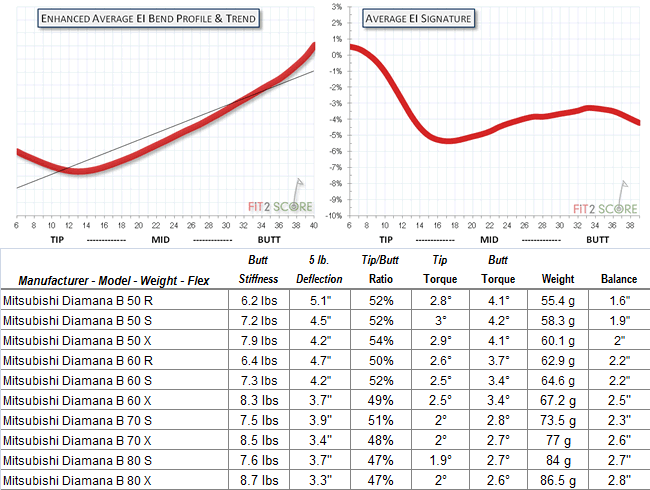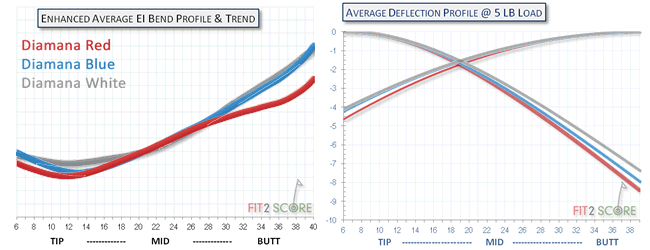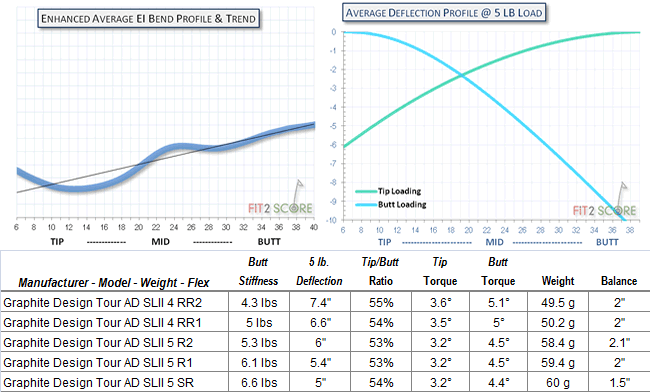Mitsubishi Diamana R – Third Generation

The last of the third Generation Mitsubshi Diamana driver shafts released in September 2014. The Diamana ilima, the second generation Diamana Red Board has long been my favorite fairway shafts. The expression, ‘if its not broken don’t fix it, applies the the third generation Diamana R. It changes very little over the second generation design. The butt stiffness is a little softer, allowing for a little more load at the start of the downswing. New material, high modulus 80 ton fiber is use in the hoop wraps in the shaft. In the butt, the hoop strength increases while the stiffness decreases. We are seeing more creative designs in carbon fiber golf shafts. Design is limited by the creativity of the shaft engineer and by the willingness of the golfing public to embrace these new products at ever increasing costs. At $400, the Diamana R, one of the greatest fairway shafts I know of, is beyond the typical $300 price of the off the rack fairway. You get what you pay for, and in this case, in the 70 and 80 gram models, you are paying for tip torque low enough to control the weight of a 3 wood head.
This is a high launch shaft. For those who hit their woods off the turf, where a downward angle of attack is all that is possible, a high launch shaft is a good thing. With a driver, and an upward angle of attack we would seek a lower launching design. But with a fairway, this is my design of choice.


I checked 10 shafts, one of each weight and flex, the average radial consistency was 99.6% with a standard deviation of 0.2%. That is an example of the made in Japan tradition of excellence we have historically seen from Mitsubishi Rayon. This is the first shaft I know of to use 80 ton material. It is too stiff to be used in the linear and bias plies. It is used to create hoop strength. Because it is thin and has no open space like multi axis weaves it creates high hoop strength while leaving the shaft designer the space inside the multi layered wall to achieve the linear and torsional strengths he is seeking to achieve. All while creating a smooth lose of stiffness down the shaft and the unique Mitsubishi feel.
New to third generation Diamana R series are 50 gram shafts. The line between the ultra light driver shafts and light weight versions of standard shafts is getting blurry. The Diamana R series extends the profiles consistently into the 50 gram versions. Those with slower drive swing speeds that need launch and spin can get it without having to accept a high torque tip.
Now that the third generation Diamana release is complete, lets compare the three designs by looking at the 60 gram version of each shaft.
 These shafts are not as different as they once were. At least in the 60 gram versions. The Diamana B series was reviewed earlier as was the Diamana W. The profile of the Diamana W changes significantly in the 70 and 80 gram versions. But as you can see here, in the 60 gram version is it just a little higher launching than the Diamana W. The Diamana R is a different shaft. Softer handle, quicker loss of stiffness from mid to tip. All three shafts get stiffer as they approach the tip. If I want a stiffer shaft, I will always simply change to the next step on the stiffness progression, either getting the heavier of the stiffer model before I would consider tipping these shafts.
These shafts are not as different as they once were. At least in the 60 gram versions. The Diamana B series was reviewed earlier as was the Diamana W. The profile of the Diamana W changes significantly in the 70 and 80 gram versions. But as you can see here, in the 60 gram version is it just a little higher launching than the Diamana W. The Diamana R is a different shaft. Softer handle, quicker loss of stiffness from mid to tip. All three shafts get stiffer as they approach the tip. If I want a stiffer shaft, I will always simply change to the next step on the stiffness progression, either getting the heavier of the stiffer model before I would consider tipping these shafts.










